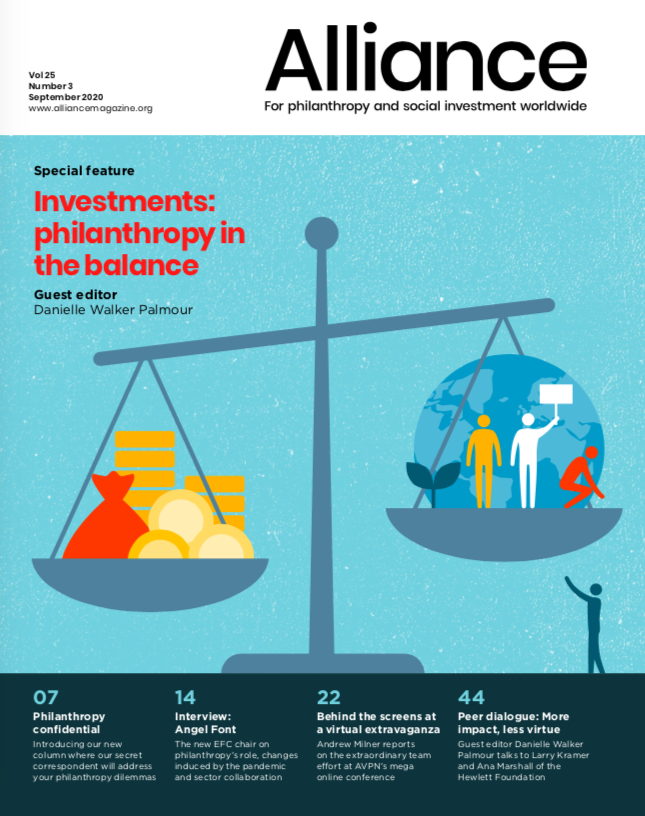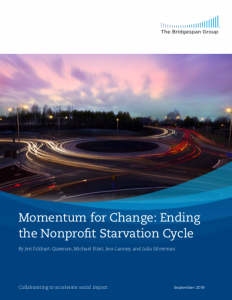The Covid-19 pandemic has encouraged greater donor flexibility and perhaps an overdue willingness to cover all costs
The Covid-19 pandemic has compelled philanthropic foundations to review their funding policies. As of writing, over 775 US foundations have signed a Council on Foundations’ pledge promising greater flexibility and to ‘loosen or eliminate the restrictions on current grants’, for example, by converting project-based grants to unrestricted support. This call for greater flexibility is welcome, but one must ask why did it take so long and require such extraordinary circumstances to reach this point?
The unhappy consequences of foundations’ restrictions on funding, particularly their failure to pay indirect costs, have long been apparent. One year ago, the presidents of five of the richest and most influential American foundations – Ford, Hewlett, MacArthur, Open Society and Packard – said they would finally address their limits on indirect cost recovery. A report by Bridgepsan Group which accompanied the presidents’ statement confirmed that to accomplish agreed upon activities non-profit organisations often spend more, sometimes substantially so, than they received in project funding. The five foundations could have learned this from many previous reports which drew similar conclusions.
Refusal to provide sufficient indirect costs is a sure sign that a foundation cares more about its project than its grantee organisation.
A 2013 Bridgespan report, for example, noted that ‘seventy per cent of the NGOs surveyed…’ named ‘insufficient indirect cost recovery’ as one of their most pressing problems,’ while a 2015 survey of 65 NPOs conducted by InsideNGO (now Humentum) indicated that 70 per cent of them experienced funding shortfalls because of unrecovered overhead expenses.
Foundation executives and programme officers have long been aware of this. In 2001, then Hewlett Foundation president Paul Brest noted: ‘[W]hen foundations designate funds for a particular project, they typically limit “overhead” to a percentage of the grant that falls far short of covering the actual cost of the project.’ In 2015, Ford Foundation president Darren Walker referred to the ‘overhead fiction’, in which non-profit organisations submit proposals that do not cover the full costs of project implementation because donors limit overhead. Walker added: ‘At Ford, we have been willing participants in this charade.’ As a result, many non-profit organisations have been ‘socialised to scarcity’ in Paul Farmer’s insightful phrase.
A relationship turned on its head
These problems have become worse because strategic philanthropy, pay-for-performance awards and similar schemes have made grantmaking more transactional and less based on donor-grantee relationships. The advent of donor-centric strategic philanthropy moved grantmaking at many leading foundations from general or programme support to awards aimed at achieving specific goals. Grantees’ value has often been based on the extent to which they can help a donor achieve its programmatic goals. Refusal to provide sufficient indirect costs is a sure sign that a foundation cares more about its project than its grantee organisation. Consequential, path-breaking activities have been financed by donors who refuse to pay appropriate costs, but non-profit organisations have paid for their parsimony.
To be fit for purpose and prosper, such organisations need support not only for their visible public activities but also for the backstage work that makes it possible and that indirect costs pay for.
Foundation grants do more than simply pay for particular activities, they confer prestige and status on their recipients and call attention to particular issues. Foundations legitimise grantee organisations and their approach to problems. A foundation’s refusal to pay indirect costs isn’t just a statement about financial management, it is a declaration of what’s valuable. A non-profit organisation’s infrastructure, management, and governance are seen as luxury items that don’t merit support.
The widespread judgment that a foundation’s responsibility to fulfil its mission and superintend its resources is best discharged by sharp-eyed attention to what it wants to accomplish and to paying only for direct project activities has damaged the non-profit sector. There have been detrimental operational consequences and harm to non-profit identity and rationale.
A vicious circle
To carry out their missions, many NPOs accept grants that do not pay full overhead. They make up the shortfall with unrestricted funds, which means that those unrestricted funds cannot be used to support programme expansion or innovation, so innovation is stifled and scaling up is limited. The underfunding of overhead weakens governance, reduces oversight and lessens management of programmes. This leads to less robust programmes and more errors in spending and reporting, which diminishes programme effectiveness, reduces public esteem for NPOs and thus lowers levels of support.
Two changes needed
Two changes would help resolve these issues. First, non-profit leaders and foundation executives must change the indirect cost recovery paradigm. By acknowledging the negative organisational consequences of unrecovered costs, the statement from the five presidents is a small step in that direction. However, continuing an exclusive focus on project outcomes ignores the crucial role that an organisation’s management, infrastructure, and governance play in the delivery of outcomes. The terms must be changed to talk about institutional and organisational strength, stability and effectiveness, rather than about ‘full costs’, or ‘real costs’, which emphasise the short term – the completion of donor-supported projects – rather than the well-being of grantee organisations and the success of their programmes.
Indirect costs provide for organisational sustainability and development and support the management, infrastructure and governance that non-profits need to flourish.
We need a different way to conceptualise indirect costs, which include more than mundane back office functions. Indirect costs provide for organisational sustainability and development and support the management, infrastructure and governance that non-profits need to flourish. Failure to pay these costs jeopardises specific projects, individual non-profits, and the many causes that the non-profit community serves. The Covid-19 crisis has made the need for effective non-profit organisations very clear. Communities across the globe have relied on NPOs to provide all sorts of services from shelters and food distribution to health testing and care to data collection and research. If donors want NPOs and their staffs to be available for the next crisis, they must provide appropriate support for existing operations.
Foundation grants do more than simply pay for particular activities, they confer prestige and status on their recipients and call attention to particular issues.
A second needed change is the development of an agreed-upon international financial standard defining direct and indirect costs and how they should be conceptualised and presented. The Covid-19 pandemic upended the ability to implement projects as planned, in the process forcing reconceptualisation of ongoing projects and their funding. Developing common cost classification and financial reporting policies and procedures among foundations would allow for more accurate assessments of what’s reasonable and appropriate and would better prepare the NPO community for the next crisis. Humentum, of which I am a director, is among those working to develop such a standard.
None of what I have argued should be taken to mean that NPO costs, including overheads or indirect costs, should not be subject to careful calculation and review. NPOs exist in a competitive environment. There is almost always more than one non-profit organisation trying to gain attention, influence and resources in a given social space. Operational efficiency should be taken into account by donors. Some non-profits are swifter, more reliable and more effective than others. Indirect costs are one way of differentiating among them – not just the level of overhead but its efficiency based on the type of organisation and its mission.
The success of foundations’ grants – the ability to achieve the strategic goals they have identified – depends on strength of the sector and individual NPOs. These thrive not only because of their staff members’ often highly specialised skills but also because they enjoy sufficient resources, adequate infrastructure, proper programme management and appropriate institutional governance. To be fit for purpose and prosper, such organisations need support not only for their visible public activities but also for the backstage work that makes it possible and that indirect costs pay for. Let’s hope that the Covid-19 pandemic helps foundation executives find substantial ways to operationalise their new found commitment to greater flexibility, fewer restrictions, and more indirect cost recovery.
The opinions expressed in this article are the author’s alone. Full disclosure: At different times in his career the author has worked for organisations that received substantial funding from the five foundations making the announcement discussed in this article.
Peter J. Donaldson is Population Council president emeritus, and distinguished senior fellow, Center for Nonprofit Management, Philanthropy, and Policy, Schar School of Policy and Government, George Mason University.
Email: Donaldson.peter@gmail.com





Comments (0)